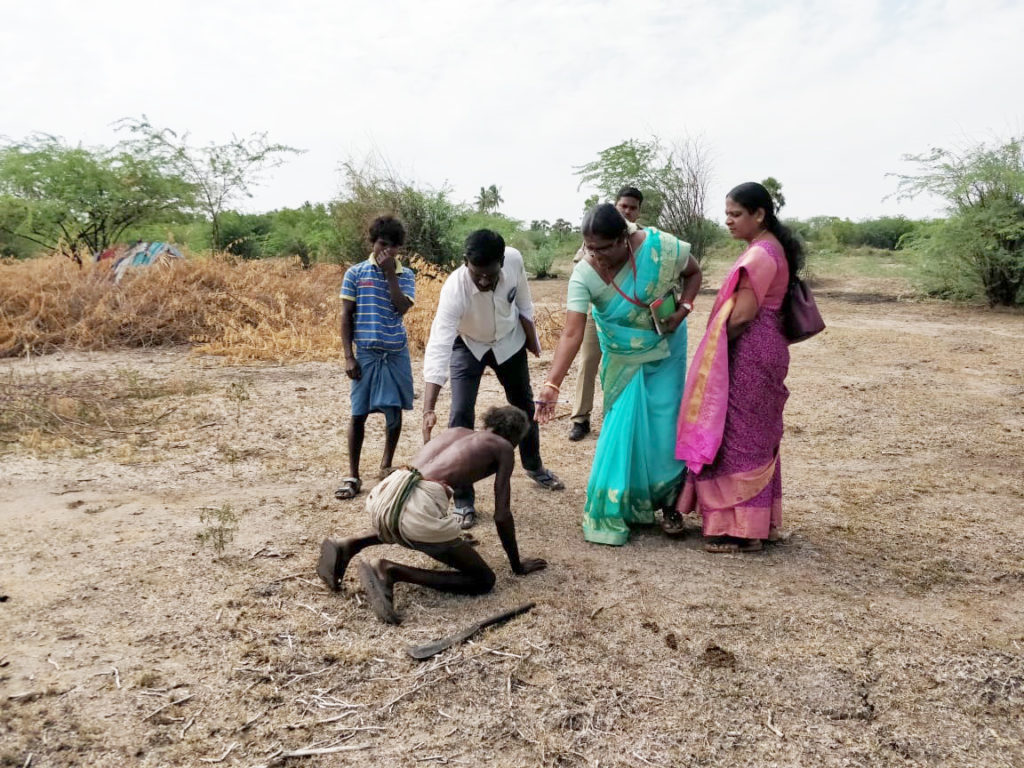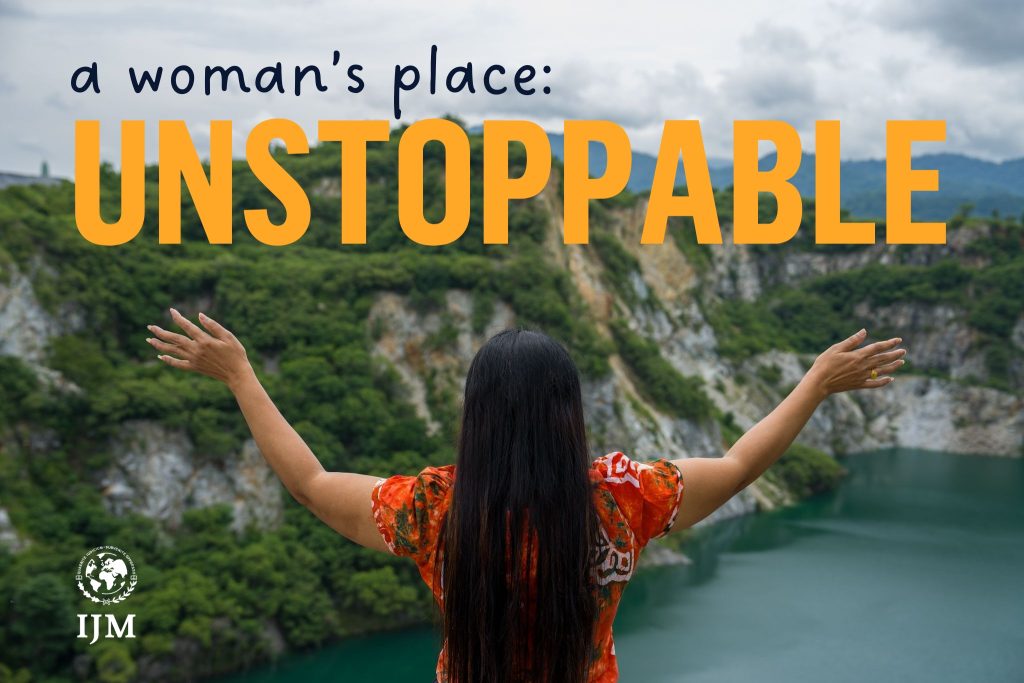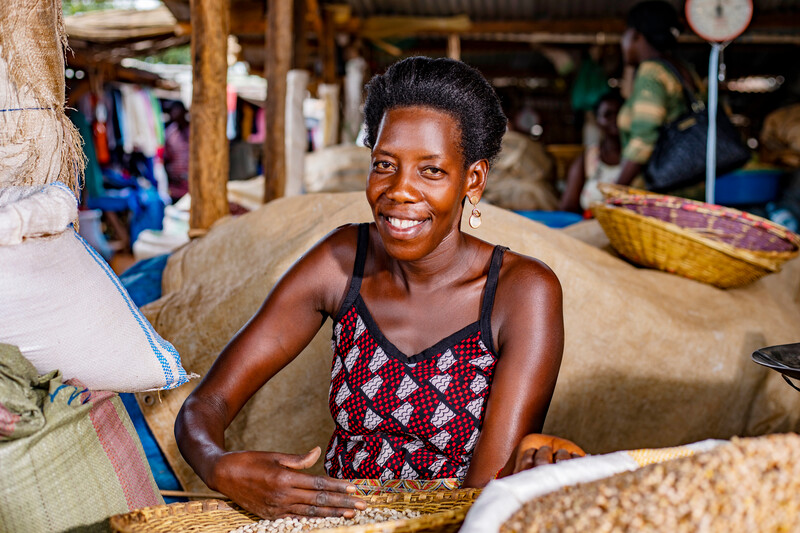
Vinita Thomas Joseph
Every time I hear stories of rescue, my heart races and I find it hard to accept the reality that slavery exists. At that moment I hold on tight to every ray of hope that I see in the work we do at IJM, knowing day after day every cry of the oppressed will find an ear.
The day I saw this image from a rescue operation from my father’s hometown in Chennai, a million thoughts ran through my mind. It felt as if I was standing there watching this scene unfold with a broken heart. Even though I grew up in India knowing that poverty and disparity of classes exist, the reality of slavery is, however, lesser known. Staring at this scene, how I wished my beautiful country was not known for these hardships.
I kept imagining what drove this man to fall on his knees – was it the physical torture he endured or hopelessness he faced as a slave trapped for years? In Indian culture, it is not uncommon to see a young person touch the feet of an older person to seek their blessing. Physical demonstration of respect is significant in our culture. However, this was different and all the more difficult to accept because the man on his knees (his name is Kasi) was certainly not young.
The role reversal in this picture was confronting because a man of this age should be shown respect and honour, yet here was Kasi on his knees with his hands extended.
Days passed with the image still embedded in my mind. I had this urge to trace the journey of this older man – how did it all start, his journey into slavery?
My past work as a community development worker in India gave me some insight into this. Often I came across stories of the rural poor burdened with debt (as little as $20AUD) and impending climate crises. These burdens took them to the doorsteps of wealthy landlords or money lenders, where they fell on their knees. At the feet and the mercy of the wealthy, they would offer their labour and willingness to sacrifice any physical pain in the hope of a better future. It is only a while later that they realise what has befallen upon them, the labour too hard for any able body and the physical pain transitioning into abuse.
For many, their stories are awaiting a happy ending just like Kasi who chose to end his journey as a slave, perhaps the same way it once began: by falling on his knees, he decides to suffer no more, proclaiming “my journey as a slave ends at this very moment”.
Here in Australia, I am separated by distance from my country but united in hope and prayer that every cry will most certainly find an ear.
Vinita Thomas Joseph is originally from India but has been living in Sydney and joined IJM Australia earlier this year.
The photo of Kasi made headlines after the rescue of 42 bonded labourers in July 2019. Read the full story here.





